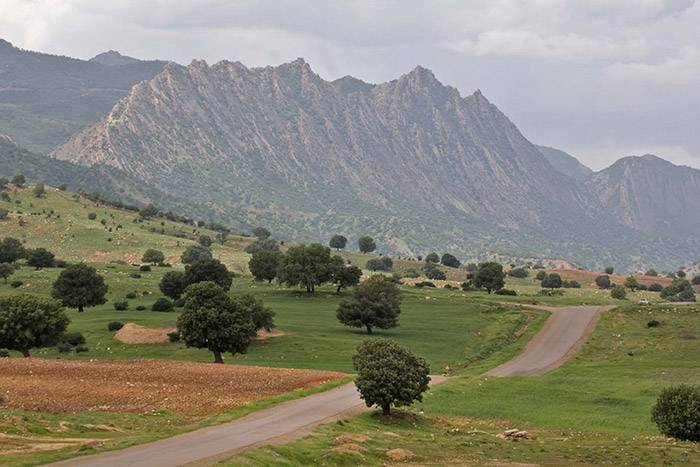Key Biodiversity Areas of Iraq
Key Biodiversity Areas of Iraq
Nature Iraq
Tablet House Publishing, 2017
Hardback, 297pp; colour photos, illustrations and maps
ISBN 978-0-9886514-6-3; £49.99
A review by Mike Evans
Key Biodiversity Area (KBA) is a conservation term that has only come into use relatively recently, and which signifies a natural extension to the Important Bird Area (IBA) initiative, moving from conserving sites for birds to conserving sites for all taxa. Like IBAs, KBAs are areas of above-average value for wildlife, by virtue of supporting globally threatened, endemic or congregatory species, in good numbers or diversities. As with IBAs, they should be delineable and (potentially) manageable as ‘protected areas’.
Few countries have yet attempted an inventory of their KBAs. Hence the publication in 2017 of this substantial survey of KBAs in Iraq represents a major advance for biodiversity conservation in the country and in the region. Building on the original 42 IBAs identified via a desk-study in 1994, a total of 82 KBAs are now well described and mapped, based on at least six years of systematic fieldwork across the length and breadth of Iraq (2005-2010), in often difficult conditions, followed by several years of analysis and write-up. Planners, decision-makers and concerned citizens in government, private sector and wider society now have a much clearer picture of the sites that most deserve to be safeguarded against damaging developments and it is notable that some of the most important have already been recognised and designated as protected areas by the government. A joint production by the NGO Nature Iraq and the Ministry of Health & Environment, the book takes its place alongside similarly comprehensive ‘site conservation’ studies in neighbouring countries, such as KBAs of Turkey (Doga Dernegi 2006) and the Protected Area System Plan of Saudi Arabia (NCWCD 1990), and will hopefully promote international cooperation for conservation, based on site networks for shared species.

In Iraq, the KBA field teams surveyed all three major biomes (mountain, desert and wetland) and screened candidate areas primarily on their birds, higher plants, fish and larger mammals, thus covering the better known groups from the terrestrial and freshwater realms. Like its neighbours, Iraq is important for globally threatened species such as Egyptian Vulture and Sociable Lapwing, and there are plenty of KBAs listed in the book for the former, but it is perhaps the endemic species which capture the imagination as particularly Iraqi, and in these the country is rich, with the northern mountains being part of the globally important Irano-Anatolian Hotspot (think wild tulips, orchids, salamanders…) and the southern marshlands constituting one of only about 10 freshwater Endemic Bird Areas in the world (think Iraq Babbler and Basra Reed-warbler, but also 5 endemic bird subspecies, plus Euphrates Soft-shelled Turtle, Mesopotamian Fallow Deer (now extinct), Bunni’s Bandicoot-rat…).
The latter wetlands were also, until their recent damming and drainage by Saddam’s regime, one of the great wildlife spectacles of the world, hosting millions of congregatory waterbirds at the pivotal centre of the West Siberia–East Africa Flyway – and they still retain some of that glory. Greatly degraded too have been Iraq’s vast deserts, by over-grazing and over-hunting during the last 100 years, with the large herds of Wild Ass & gazelles, and their attendant cheetahs, no more – though these ‘great plains’ still form the northern part of one of the planet’s last great wildernesses, the Arabian Desert. So there has been much damage, but the conservation community (though rarely yet government) increasingly dares to imagine large-scale restoration of degraded habitats, and so the remaining KBAs in the southern marshes and deserts could hopefully become nuclei for regenerating the landscapes around them, in the longer term.

Apart from being a guide for spatial planning, the book also represents a snapshot of the baseline conditions, as-of the mid-2000s, at these sites, in particular the state of the ‘KBA-triggering’ species (in terms of population size or abundance) and their habitats (in terms of quantity and quality), as well as the pressures affecting these species/habitats, and the positive conservation actions that are being (or should be) undertaken. This published benchmark will thus be invaluable in gauging the ongoing ‘health’ of these sites, especially if a monitoring scheme can be initiated, so as to capture regular snapshots of the state, pressure and response at the sites. The involvement of both a government ministry and a national NGO in the creation of this book gives hope that such regular site-visiting and reporting could be organised, especially if local communities can be encouraged to take the lead at each site.
Overall this book is a well-produced information resource and guide for action which will hopefully be distributed widely within national, regional and local governments in Iraq, as well as to public libraries and universities. It could spur fieldwork, research and monitoring, involve local people in practical and useful activities, guide development towards a more sustainable path and be a focus around which government, private sector and civil society can cooperate towards positive achievements. Ultimately, by conserving these special places, Iraq (and the world) will be a richer place.

Mike Evans is Conservation Data Manager at BirdLife International in Cambridge and was the compiler of the Important Bird Areas in the Middle East inventory in 1994.
